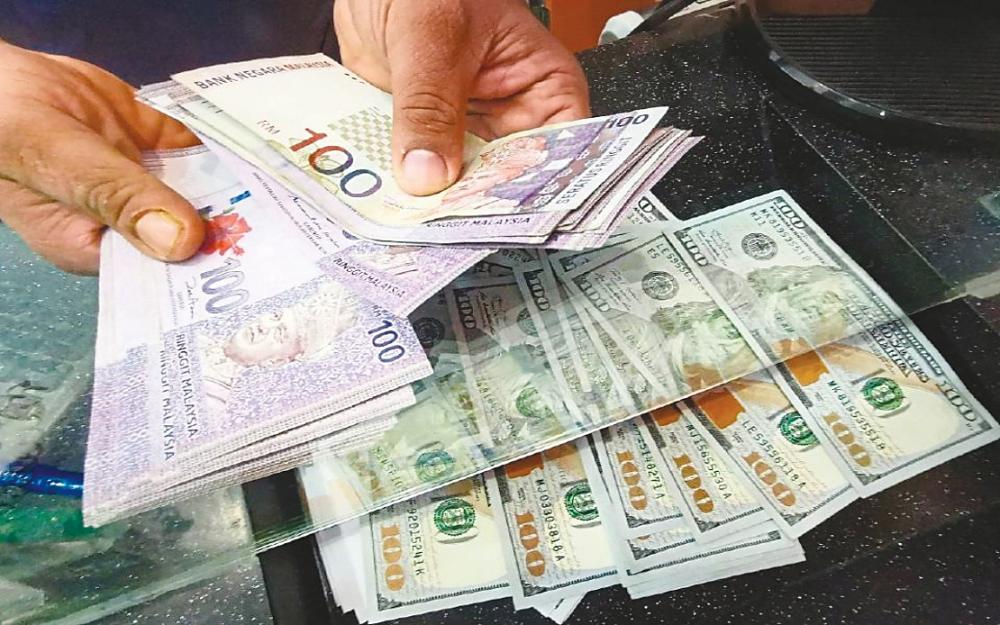KUALA LUMPUR: The Malaysian government needs to watch out for vulnerable corporates and households that are exposed to currency risks, particularly import and debt-servicing costs.
“While widespread financial distress due to ringgit depreciation against the US dollar is unlikely, of greater concern is imported inflation that will add to domestic price pressures and higher inflation expectations,” Sunway University professor of economics Dr Yeah Kim Leng told SunBiz.
Most countries including Malaysia, have to brace for further strengthening of the US dollar till at least the first quarter of next year, Yeah said. Several more US rate hikes are expected, which will lead to further strengthening of the greenback.
“The US Federal Reserve (Fed) remains hawkish despite three consecutive 75-basis points increases as inflation remains persistently high at over 8%, which is way above its 2% medium-term target,” he said.
The ringgit continued its losing streak against the US dollar last week, ending at a record low of 4.5775 on Friday.
Bank Negara Malaysia (BNM) governor Tan Sri Nor Shamsiah Mohd Yunus said on Friday that rather than resorting to capital controls or repegging of the ringgit, the policy priority now is to sustain economic growth in an environment of price stability and to strengthen domestic economic fundamentals through structural reforms. This will provide more enduring support for the ringgit.
The central bank continues to closely monitor and ensure orderly financial market conditions amid external developments that have led to persistent strength in the US dollar against almost all other currencies, including the ringgit. The tighter global financial conditions and higher volatility in the foreign exchange markets are not expected to derail Malaysia’s economic growth, she said.
Exports are underpinned by Malaysia’s highly diversified products and markets, BNM said. The domestic financial system is well capitalised with ample liquidity, and financial intermediation continues to be supportive of the economy.
Ringgit movements will continue to be market determined, the central bank said. The foreign exchange market continues to function and intermediate effectively. Daily onshore foreign exchange transaction volume has been increasing throughout, reaching a current average of US$13.3 billion against US$11.3 billion in 2021, amid two-way flows. Bond market activity remains healthy, well supported by institutional investors and financial institutions.
“The near-term pressure on the ringgit will remain because it all depends on (when) the US Fed rate will peak and that too will also have an influence on the US dollar. Once you assess the US Fed likely to stabilise the interest rate climb, that would have lessened the pressure on the emerging market crisis, including the ringgit,” said Socio-Economic Research Centre executive director Lee Heng Guie last week.
He said export-oriented industries will have a competitiveness advantage when the ringgit is weak. “These industries will earn a lot of foreign exchange (from export proceeds), maybe in US dollar.”
For tourism, the lower ringgit rate will encourage foreigners to visit the country and spend due to higher purchasing power.
On trade, Lee said a weaker ringgit increases cost of imports but as long as the export level continues to outpace that of imports, the trade balance should remain in surplus, albeit lower.
Domestic-market oriented industries which have high import content and high local sales will experience the negative impacts of the weakening ringgit driven by increased imported costs coupled with rising business costs as well as lower profit margins.
Lee said the government needs to continue strengthening the resiliency of the economy, and ensure that its policies remain conducive to attract foreign direct investment, which will improve the demand for the ringgit.













